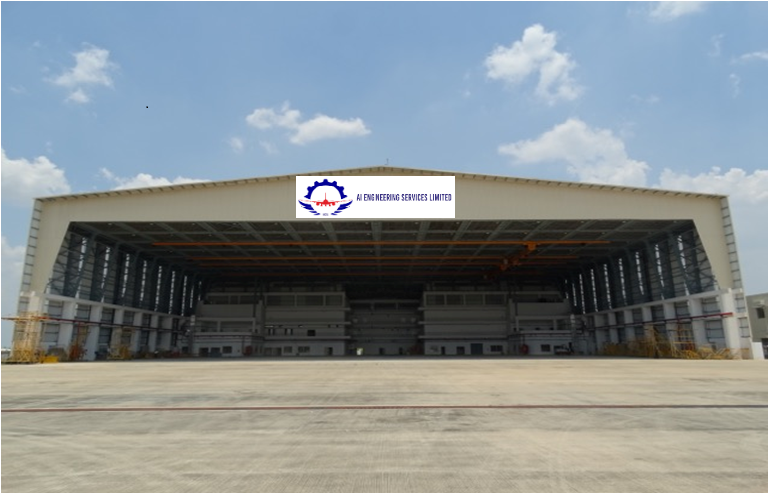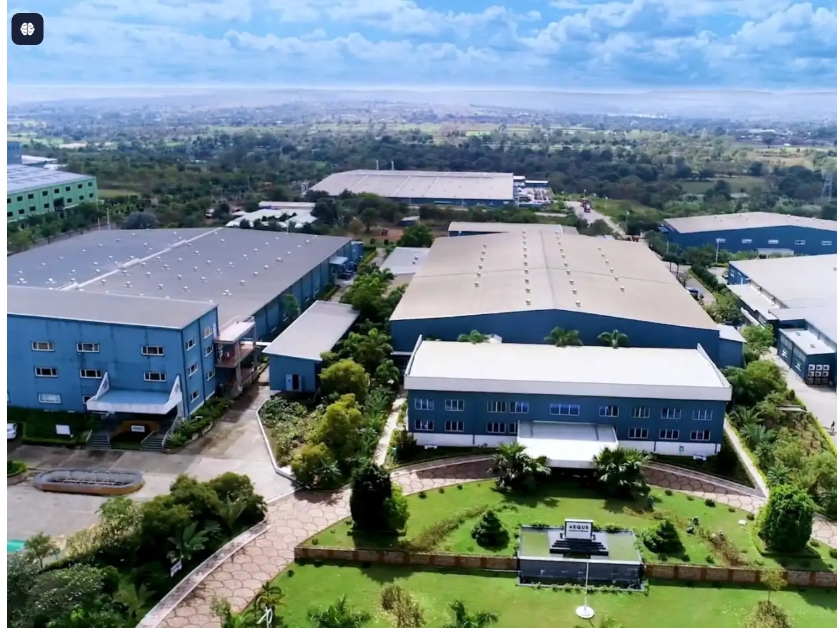By Swati Ketkar

The world is already eyeing India as having the largest aircraft orders, to top it, recent media reports have claimed that Air India is in talks with Boeing and Airbus for a fresh order of another 50 A350 or B777 widebody aircraft to expand its international long-haul travel. If this is true, the total aircraft orders in India, when we combine the three airlines – Air India, IndiGo and Akasa Air comes to nearly 1,300, with deliveries expected through the mid-2030s. The fleet size of Indian airlines is projected to reach 1,500 to 2,000 by 2030. If we look at the above figures, we can only imagine the amount of maintenance work that these next-gen aircraft will need over the next few years.
Airline strategy for developing in-house MRO capacities viewed as competition to independent MROs?
True, the new aircraft won’t be needing heavy maintenance soon, but airframe and base and line maintenance are a necessary protocol and even today India does not have enough capacity to meet the demand of all the incoming fleet. However, airlines, in their way are gearing up to meet the huge inflow of maintenance demand in the next few years. Let us understand this with the help of an example from Air India and AI Engineering Services (AIESL). Air India has indeed started developing its in-house maintenance capabilities it is also credited as the first airline in India to get DGCA approval for line maintenance on widebody A350 aircraft. Then Air India is coming up with its own MRO facility in Bengaluru, which is expected to start commercial operations next year. But Air India’s strategy to build its in-house maintenance capabilities is not to compete against AIESL or any other independent MRO in the country.
Even today a huge chunk of Air India fleet is maintained across various AIESL facilities in India. As we progress further, Air India will take deliveries of newer and more advanced aircraft and the demand for MRO will rise further. Competition in any sector is when the demand is less and the suppliers are more. Here the situation is reversed. There is a huge incoming demand and comparatively, there are too few MROs in India to handle the incoming MRO demand. Hence, Air India’s strategy of developing its own in-house MRO capabilities is to build a strong MRO foundation and be prepared for the MRO demand.

AIESL, too in its way is developing its maintenance capabilities. The AIESL Trivandrum facility is soon to get EASA approval in the next couple of months. So even if there are two different MRO entities, it is not enough for the MRO demand in the country. India will need many more private MRO players, complemented with airline maintenance capabilities to truly become self-reliant in the MRO sector.
Air India has given the entire contract of retrofit of its legacy fleet to the Air Works Hosur facility. Here Air India’s legacy fleet of 67 legacy narrowbody and widebody aircraft, including 40 Boeing planes will undergo a complete revamp with new seats, cushions, carpets and new livery with Air India’s latest branding and colours.
Indian MRO roll-over in the next 5 years
About a couple of years from now, avionics MRO was a foreign term in India. All the domestic airlines used to go overseas, mostly to Singapore or the West for avionics upgrades or heavy repairs, with airlines paying an arm and a leg to get the repair work done. This ends in 2025 with Thales opening its very own avionics MRO in New Delhi. The MRO will take care of all the comprehensive avionics maintenance and repair services to leading Indian airlines, such as Air India and IndiGo, directly supporting the growth of the local aviation industry.
Very soon the huge gap in the engine MRO segment in the country is expected to be plugged to some extent with Safran’s upcoming LEAP MRO facility in Hyderabad. This coupled with AIESL’s engine MRO capabilities is expected to take care of 30 to 35% of engine MRO demands of the country.
Other aerospace companies have also witnessed this gap like Aequs is also planning an engine MRO with Mellegan in Belagavi SEZ. Despite this India needs more players to come forward and establish their engine MRO shops to avoid a huge chunk of India’s domestic aircraft engines going abroad for overhaul.
Of lately there is a new trend with some private players establishing their independent MROs and repair shops in remote corners of the country. Just recently Aero Technics is coming up with a new MRO facility in central India’s Madhya Pradesh. Some other players like HaveUs Aero Tech are also planning their MRO facilities in the far eastern part of India – Kolkata to be precise. Hence if we look at the broader picture, over the next 5 years, MROs will be seen in every nook and corner of the country and not just confined to metros. Plus, the existing MROs in metros will further expand their capabilities and capacities to meet the demand.
A wave of overseas partners entering the Indian aftermarket
India is currently witnessing ahuge inflow of overseas companies investing in the Indian MRO sector. This is mostly due to flexible government policies, ease of doing business in the country and demand. Let us look at some of the players that have entered the Indian market in the last couple of years –
- Israel Aerospace Industries (IAI) is in talks with a couple of Indian companies, including Hindustan Aeronautics Ltd to establish a passenger-to-freighter (P2F) conversion facility for wide-body aircraft in India. Apart from this Israel Aerospace Industries is also looking at a huge gap in the engine MRO segment in the country and is planning an engine MRO in India.
- Lufthansa Technic has partnered with GMR Aero tech for Engine Wash solutions in the Asia Pacific region. GMR Aero Technic will perform engine core wash services for commercial aircraft as a service partner on behalf of Lufthansa Technik at Bengaluru airport
- Dassault Aviation has come up with its subsidiary Dassault Aviation MRO India (DAMROI) in New Delhi
- Air India has roped in SIA Engineering Company (SIAEC) to build the Bengaluru MRO.
- On the defence Lockheed Martin and Tata Advanced Systems Limited (TASL) have agreed to set up an MRO to support the Indian Air Force’s (IAF) C-130J Super Hercules aircraft fleet.
- Aequs partnership with Mellegan to establish an engine MRO in Karnataka, Safran LEAP MRO and Thales avionics MRO are just a few examples.
- TATA Advanced Systems Limited (TASL) is all set to expand its #operations in Karnataka with a new state-of-the-art MRO facility to support the Indian Air Force’s Lockheed Martin’s C-130J fleet, strengthening India’s self-reliance in defence and bolstering Karnataka’s role in the global aerospace supply chain. The new maintenance facility will be a #JV with Lockheed Martin.
- HENSOLDT and Samtel Avionics will establish a co-production facility in India for next-generation avionics systems focusing on three advanced products tailored for military and civil aviation
- Hindustan Aeronautics Limited (HAL) has signed a strategic agreement with Collins Aerospace for defence MRO HAL’s Accessories Complex in Lucknow. This facility will reduce turnaround time (#TAT) for repairs and enhance the operational readiness of India’s indigenous Light Combat Aircraft (LCA) Tejas Mk1
- JBI Aerospace and VIK-COMPOSITE GmbH, Germany are planning to establish a state-of-the-art composite facility in the country to address specific component needs.

Apart from the above, the Ministry of Civil Aviation (MoCA) has called upon the likes of Airbus, Boeing and their major suppliers to build engineering and supply chain capabilities in India as this will eventually lead to the manufacturing of civilian aircraft facilities in-house. The MoCA is actively engaged in talks with the OEMs and is seeking support from them in two major ways. Firstly, in terms of building engineering capability in India for the development of aerospace products like fixed wing or rotorcraft and secondly in terms of holistic supply chain support right from basic forging to simple assemblies to complex assemblies to eventually working with composite materials leading up to the indigenous building of a full-fledged aircraft.
All-in-all there is a huge inflow of overseas companies investing in the Indian MRO sector. Going ahead, this number will rise manifold. Be it JV, independent MRO or in partnership with airlines, there is huge scope for overseas MROs to partner, invest and contribute to India’s growth story in terms of aerospace MRO.
Swati Ketkar is an aviation journalist and writer freelancing for various domestic and international publications. Although she covers stories across the aviation spectrum her main focus and area of expertise is MRO.



